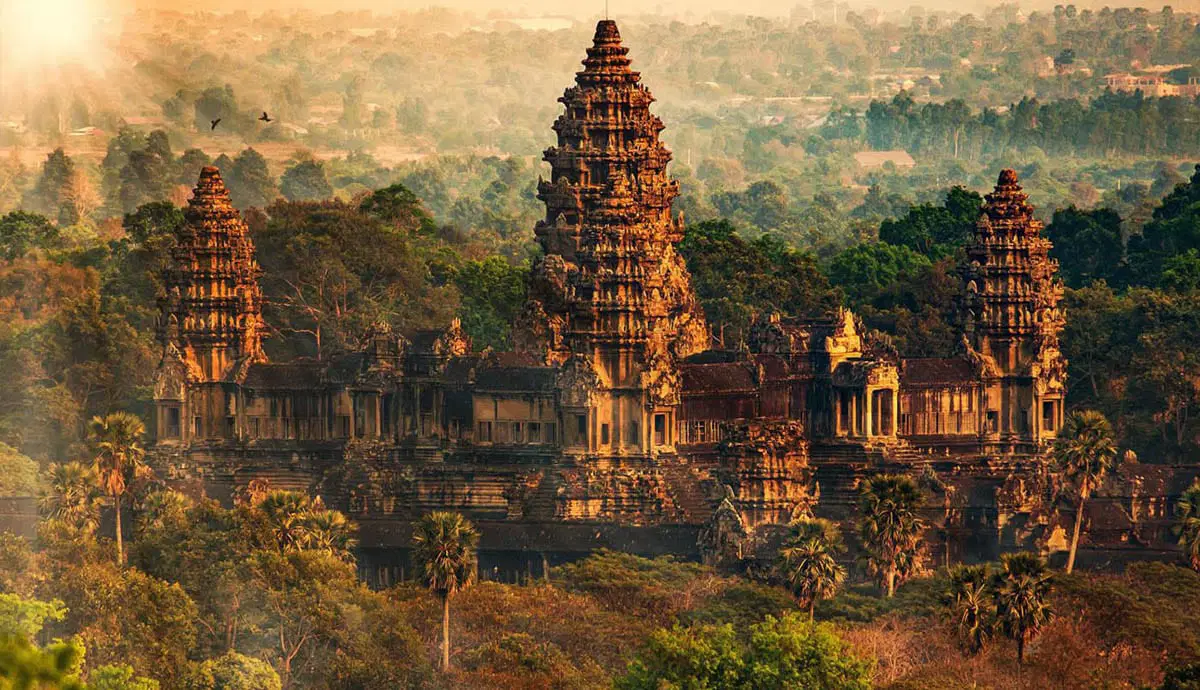innovuscollege.com – Angkor Wat, located in Siem Reap, Cambodia, is the largest religious monument in the world and a UNESCO World Heritage site. Built in the early 12th century by the Khmer Empire, it was originally dedicated to the Hindu god Vishnu before transitioning into a Buddhist temple. Known for its majestic architecture, artistry, and spiritual significance, Angkor Wat attracts millions of visitors every year.
1. History of Angkor Wat
Constructed during King Suryavarman II’s reign, Angkor Wat was intended as a Hindu temple but later adapted to Buddhism as Cambodia’s religious focus shifted. The name means “City of Temples,” underscoring its importance as a spiritual and cultural center of the Khmer Empire.
2. Architectural Marvels
Angkor Wat covers 402 acres, surrounded by a large moat. The central temple features five towers in a pattern symbolizing Mount Meru, a sacred cosmic mountain in Hindu and Buddhist cosmology. Its detailed bas-reliefs and symmetrical design highlight Khmer architectural expertise.
- Iconic Towers: The five central towers, symbolizing Mount Meru, rise up to 65 meters.
- Intricate Bas-Reliefs: Carvings illustrate Hindu epics like the Ramayana and Mahabharata.
- Unique Orientation: The temple faces west, a rare feature in Hindu architecture.
3. Cultural and Spiritual Significance
Angkor Wat represents Cambodia’s heritage and pride, remaining an active religious site where monks perform ceremonies. Its presence on the Cambodian flag highlights its role as a national symbol. The UNESCO designation in 1992 has helped preserve this historical treasure.
4. Surrounding Natural Beauty
The natural surroundings amplify Angkor Wat’s beauty, especially during sunrise and sunset when the towers reflect in the surrounding moat. This stunning setting enhances the serene and spiritual atmosphere.
5. Tourism and Preservation
Angkor Wat is one of the most visited landmarks worldwide, with millions of tourists annually. Balancing tourism with conservation is crucial; local authorities, along with UNESCO, implement regulations to limit environmental impact and educate visitors on preservation.
Visitor Tips
- Best Times: Sunrise and sunset offer stunning views.
- Respectful Attire: As an active religious site, dress modestly.
- Hire a Guide: Guides provide deeper insight into the temple’s history and art.
- Explore the Park: Nearby temples like Angkor Thom and Ta Prohm offer more to discover.
Conclusion
Angkor Wat is a remarkable fusion of history, art, and spirituality, embodying the height of Khmer civilization. With its architectural splendor and cultural depth, Angkor Wat remains an essential destination, reflecting the timeless beauty of Cambodia’s heritage.





